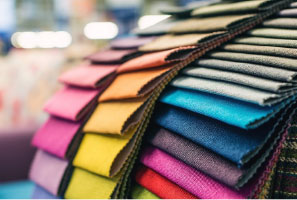Clothing companies compete in markets with a bewildering array of products designed to tempt and tantalize consumers into making a purchase. A garment’s color says a lot about the wearer and so manufacturers must get this right if they are to succeed in such highly competitive markets.
Color Matters
Color is essentially the light that is observed by the human eye. What is perceived as color is affected by the light source, how wavelengths are reflected/absorbed, and how the viewer receives and interprets the light. However, consumers are not generally aware of these distinctions. What matters to them is how they feel, and color can have a profound affect upon the way they respond to an item of clothing.
Firstly, colors are cultural markers that are interpreted in specific ways by individual societies. For example, in the West you might say “green with jealousy,” but in India green is symbolic of hope and virtue. In the Far East, red demonstrates prosperity, vitality and good fortune, but in many cultures it is used to signify a warning or danger. When choosing color palettes for clothing, it is important to be aware of these factors in order to not send out the wrong message.
Secondly, and more significantly, fashion trends will have a major impact on the colors people want to wear. Consumers are increasingly fashion-conscious, meaning suppliers need to stay informed about what color palettes are in-fashion and what are out of fashion. These trends can be impacted by a wide variety of diverse factors. For example, in 2021, people might feel drawn towards the five colors of the Olympic rings and so they become fashionable. However, in 2020, when people were often restricted to their homes, they might have looked at neutral home furnishing colors for inspiration. Without the need to go out, people often retreat towards more homey colors.
Clothing colors conform to fashion ideals and cultural signifiers, but they also conform to the needs of the consumer. This diverse set of requirements means consumer demand can change very quickly and suppliers must be able to respond rapidly to ensure their products continue to meet the needs of the market.
Choosing the Right Color
Three groups of people are normally involved in choosing what color a garment should be — the designer, the buying office, and the supplier/manufacturer. They need to make their decisions based upon an understanding of all of the above and also what they think will sell. With so many people involved, and the fact we also perceive colors in different ways, this process is inevitably subjective and difficult.
Traditionally, approving a color for a garment involves the supplier submitting a physical color sample to the other decision makers. These are then considered side-by-side, with the decision makers either approving a sample or making comments for a rework.
There are several problems with this process. Firstly, it is time-consuming and expensive, with samples and responses being conveyed back and forth between factories and offices. Secondly, this long-winded process allows the opportunity for sample contamination or aging, or the samples may even become mixed up, with decision makers commenting on the wrong swatches.
In the time of COVID-19, the color approval process has become even more convoluted. Many of the decision makers are now required to work from home. Samples therefore need to be ferried to even more destinations, increasing the chance of contamination or confusion. It is also possible that couriers may be unable to deliver to some decision makers, based on regional restrictions. The whole process is therefore slowed down and more expensive, with an increased possibility of mistakes occurring.
Digitalization: A Better Way to Choose Color
Forward-thinking businesses are now turning towards digitalization to help them streamline the color assessment process. Instead of sending physical samples to decision makers, they are sending samples to independent laboratories that then measures the colorimetric data and capture real color images. If required, the laboratory will also generate a color data file.
This information is then shared to all decision makers via cloud-based technology. All stakeholders have rapid access to the same image, report, data and standards, allowing them to make informed decisions based on identical information about the sample.
This process has multiple advantages for both the supplier and the consumer. For consumers, it results in less expensive and more appealing products. For designers, the process is faster and more accurate. It also allows suppliers to respond more quickly to changes in fashion, meaning the consumer can easily stay ‘on-trend’.
With samples only needing to be sent to one destination, the process is cheaper and more sustainable. It also allows greater consistency and engenders objective decision making.
SGS Solution
SGS’s cloud-based solution helps suppliers to streamline their color approval process. Samples are processed by their global network of specialist laboratories, and the results can be viewed by stakeholders around the world. The system measures samples to ISO 105 J03 or AATCC 173 and can be applied to wide variety of materials, including rubber and leather.
When designing and manufacturing new garments, SGS’s Cloud Based Color Assessment service provides the ideal solution, helping businesses to reduce waste and their carbon footprint, while speeding up the decision-making process and removing subjective inconsistencies.
November 2021





